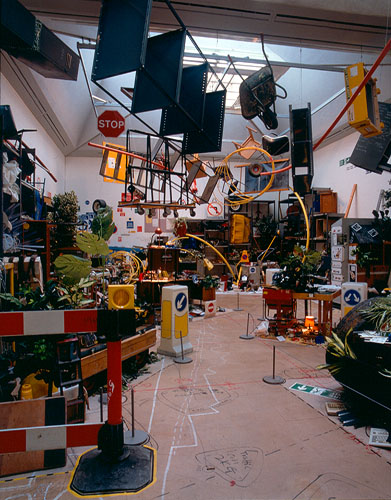Tomoko Takahashi’s playful agglomerations of detritus gleaned from skip or tip must seem like a godsend to tabloid editors determined, themselves, to do a little bit of recycling. Every Takahashi exhibition is an irresistible incitement to run the old, tried-and-trusted story about modern art being a pile of rubbish. After all, even the artist’s most fervent supporters have to admit that her work is (literally, at least) junk. Should Takahashi happen to win this year’s Turner Prize – and she is one of the favourites to do so – it can safely be assumed that The Sun, together with the rest of the usual suspects, will have something choice to say about it.
Takahashi first came to prominence in 1997 when she won the £5,000 first prize in the annual EAST international show, for a cunningly arranged installation in Norwich School of Art consisting of one room filled with stuff thrown away by the institution’s students and teachers and a second filled with rubbish generated by the artist herself. “Artist Cleans Up with Pile of Junk,” trumpeted the Daily Mirror’s headline-writer with exemplary mock-fury, while those of a more thoughtful disposition suspected her of making some kind of veiled commentary on the throwaway values of an increasingly disposable world. Takahashi has tended to play down any suggestion of polemical intent, describing herself as a creator of “designer disorder” and comparing her intricate arrangements of obsolete tat to “abstract paintings or broken sentences.” Her work is also, she has said, “very much like a landscape: a friend of mine says I’m like a gardener.”
1997 also saw the creation of Company Deal, a work in which Takahashi was allowed to flood a London marketing consultancy’s office with six weeks’ worth of its own, accumulated waste, mouldy pizza boxes...

Tomoko Takahashi
30-11-1999

